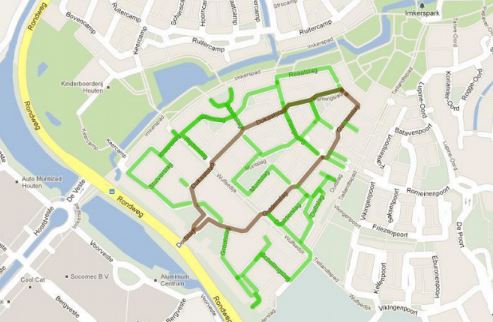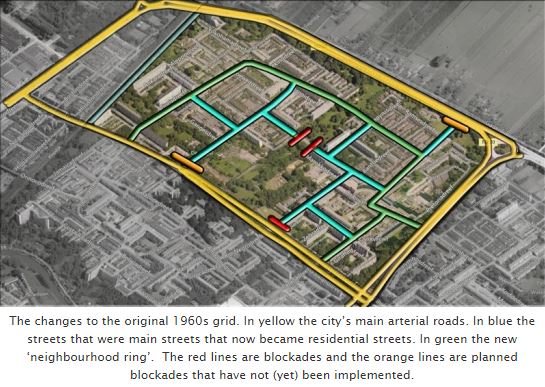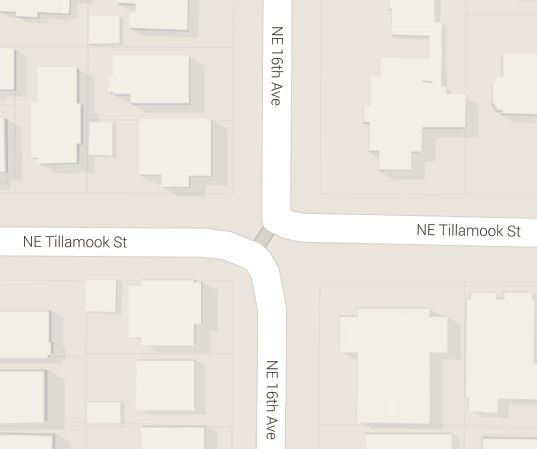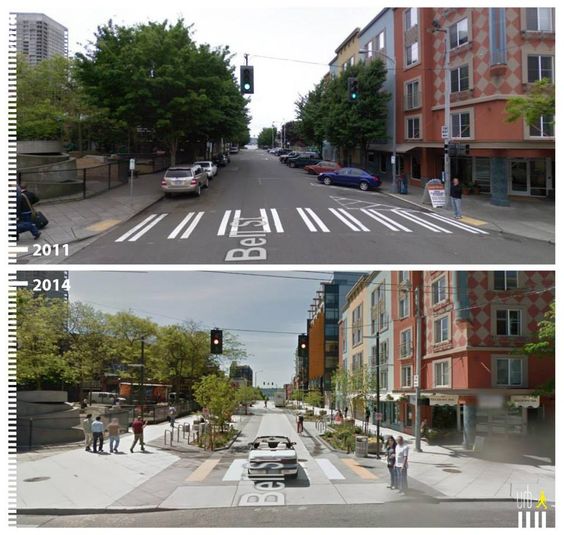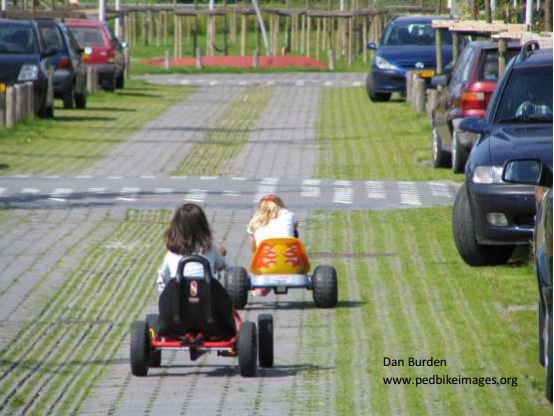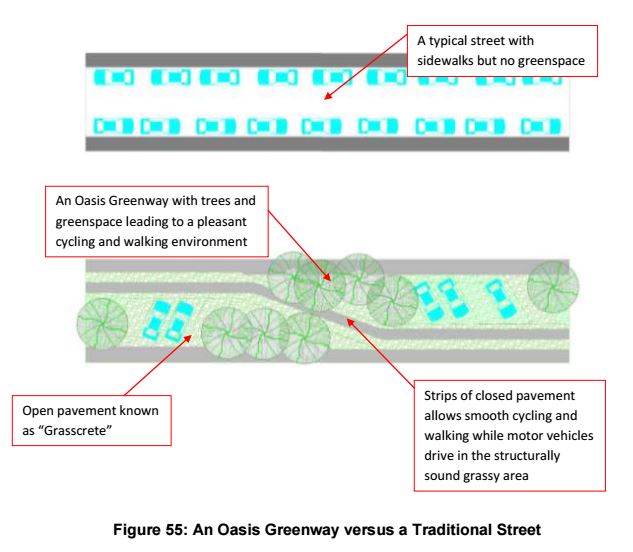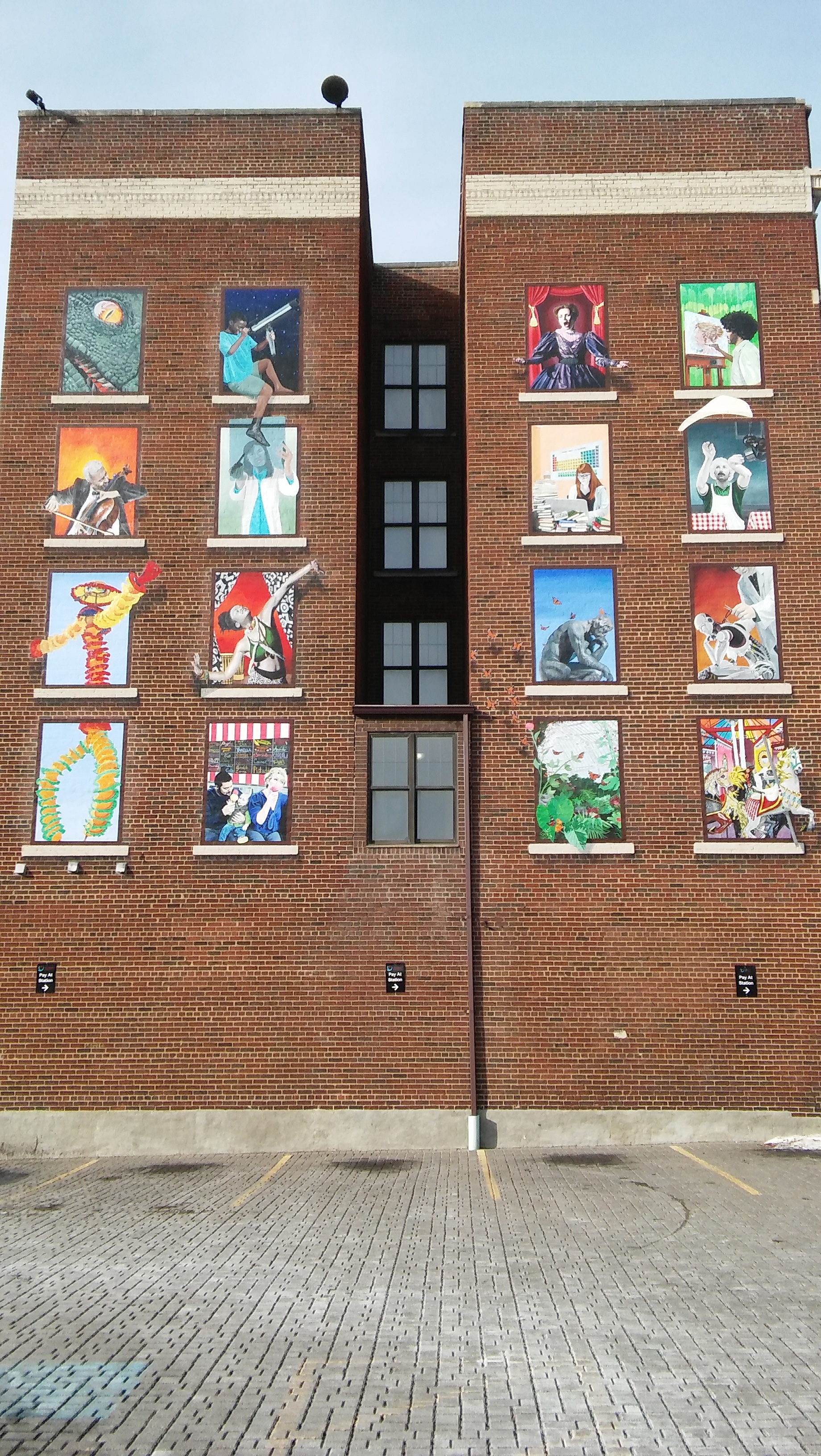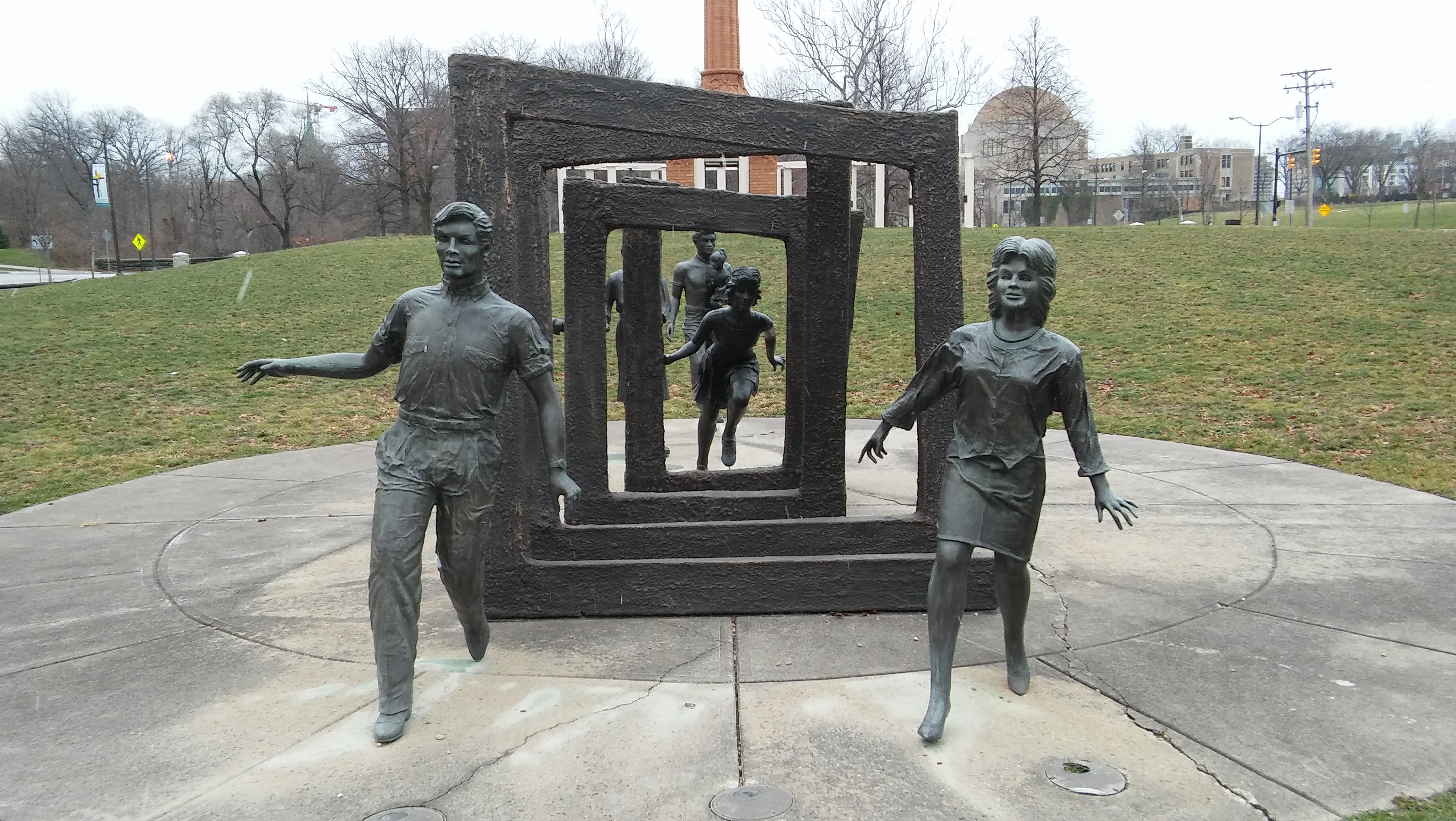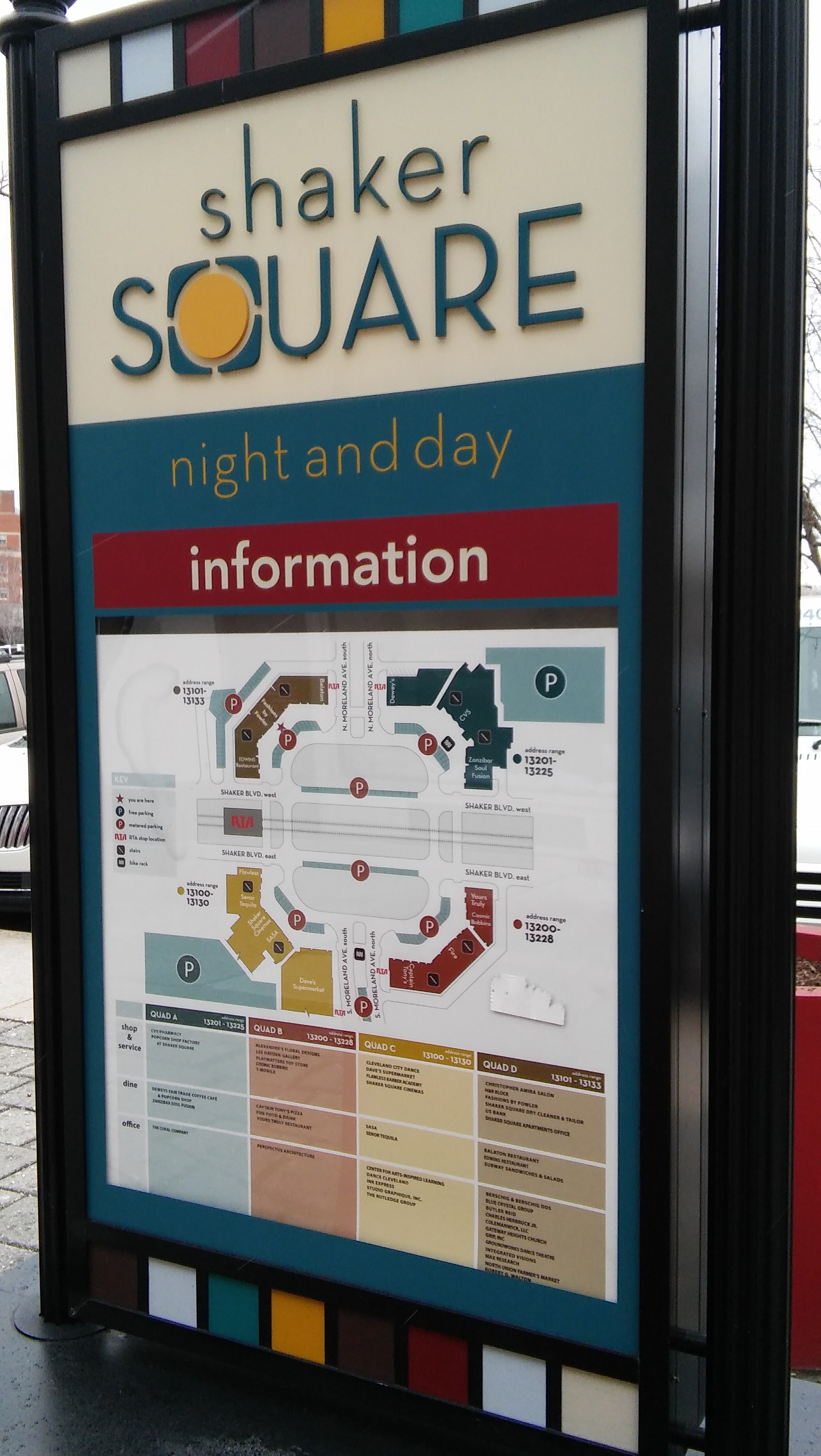“Cleveland at Eye Level” is a reference to “The City at Eye Level”. While my parents and sister were nervous about me exploring Cleveland without knowing how safe the neighborhoods are, I feel accomplished in my goal of exploring tourist and non-tourist areas of Cleveland. The following quote from my dad reinforces this feeling.
You explored more of Cleveland in two days than I explored in twenty years. -Dad
My mom and dad met at Cleveland State University so they both know Cleveland. However, my dad informed me that he didn’t explore as many of Cleveland’s ethnically diverse neighborhoods as I did. Since I believe some White people aren’t even willing to step into non-White neighborhoods, I feel good hearing that my dad explored some of Cleveland’s racially and ethnically diverse neighborhoods.
Another of my goals was to explore diverse neighborhoods and not be limited to White neighborhoods. Due to this goal, I probably explored more of Cleveland than most locals and tourists will ever explore. In case you aren’t familiar with how racially segregated Cleveland is, see the below racial dot map. My uncle, who lives in Rocky River (suburb of Cleveland), told me he thinks Cleveland is more racially segregated than DC.
Since Cleveland is so racially segregated, I felt hopeful when I saw the below tile in Settlers’ Landing at the Unity Walk, which was constructed in 1996 for Cleveland’s Bicentennial Celebration. I saw Cleveland’s Unity Walk on New Year’s Eve, which was my last evening in Cleveland. I had already walked and ridden transit through diverse neighborhoods in the westside, downtown and eastside so seeing the Unity Walk felt like the perfect way for me to close out 2016. Seeing how diverse communities in Cleveland came together to build the Unity Walk was just what I needed after a tough 2016.

Cleveland’s Unity Walk
I hope I have done a good job providing you with some background about Cleveland before showing you what I found in Cleveland’s diverse neighborhoods. I also want to share what I was thinking when taking the photos. While I want to improve my urban design and architecture skills, I find it challenging to understand whether the urban design and architecture of the buildings are good or bad so I didn’t focus much on building design. I actually almost failed an entry-level urban design course at UNC Charlotte because I don’t have an eye for building design. Devoting time and energy to pressuring the Student Government Association at UNC Charlotte to be more transparent didn’t help me improve my grade in the urban design course.
Instead of focusing on building design, I focused on wayfinding, artistic displays, sustainable infrastructure, public gathering places, and historic attractions. I’m hoping to use what I found for my advocacy and planning work. Without further delay, I chose to write about my journey through Cleveland by focusing on the westside then downtown then eastside. I took almost 200 photos. In order to keep this post short enough, I’m going to select my favorite photos.
Westside of Cleveland
Gordon Square Arts District
My Airbnb was in the Gordon Square Arts District so I started walking from my Airbnb. As you look at my photos, I want you to ask yourself “could I have seen that if I was driving?” The answer is likely no. This is why I enjoy walking instead of driving when I’m not in a rush. The below photo shows the first example of something I could only see by exploring Cleveland at eye level.

EcoVillage
It’s amazing what I found when I looked down. The below photo shows neighborhood identity in the EcoVillage. I love seeing when neighborhoods try to be unique!

Here is another example of neighborhood identity in the EcoVillage. When I see neighborhood signs like this, I appreciate that there is a strong community. On the other hand, I also ask myself how many motorists see the neighborhood sign or even know they are in a new neighborhood? I assume most motorists are too busy trying to go fast so they don’t take the time to enjoy the neighborhood they are traveling through. While I’m okay with interstate speeds being fast, I wish speed limits on all non-interstate roads were lowered so people could enjoy being in neighborhoods instead of trying to travel as quickly as possible through them.

I guess if motorists can’t see the previous two neighborhood identity markers, maybe they can see the below mural.

Ohio City
Ohio City has many artsy things to see. Correct me if I’m assuming too much. I assume motorists wouldn’t see many of the following things because they would be too busy focusing on the road and complaining about traffic congestion.


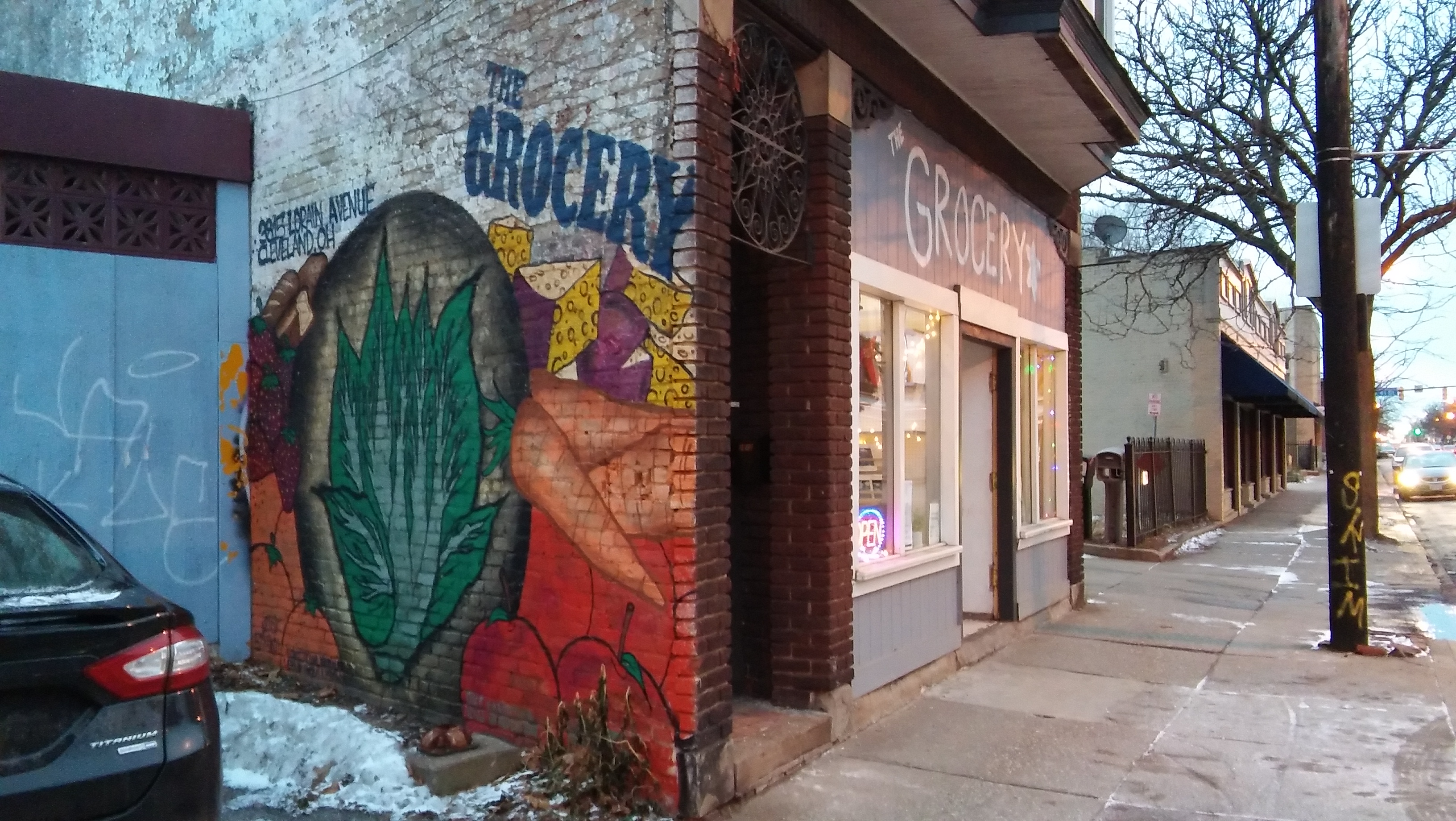



Downtown Cleveland
As I entered Downtown Cleveland, I felt jealous of how wide the multi-use path is on the Hope Memorial Bridge. I wish the multi-use path on Portland’s Hawthorne Bridge was this wide!

As a geographer and planner, I love good wayfinding. After crossing Hope Memorial Bridge, I saw a sign for “Bike Rack” so followed it. I found more “Bike Rack” signs at every turn so I was able to follow the signs all the way to the Bike Rack, which is located at Quicken Loans Arena. You may be surprised by how many wayfinding signs don’t actually direct you all the way to where you are going. I was expecting to see just simple bike racks. Instead, I found the below secure bike room. Secure bike rooms are common in Portland, but this is Cleveland. Cleveland isn’t supposed to have a strong bike culture!

The Bike Rack even has repair services!

Even though my cousin, who grew up in Rocky River (suburb of Cleveland), told me about the pedestrian street on East 4th Street before I could be surprised by it, I was still excited to see it. While it’s very short compared to many pedestrian streets I explored in Europe, I was happy to see Cleveland trying to prioritize pedestrians.

I also enjoyed seeing people interact at Public Square. The below ice skating rink is located in Public Square. Since many couples were holding hands, I missed holding hands with Catherine.

I’m still trying to figure out why these birds are in Public Square. I saw people taking photos with the birds. However, when I asked them about the birds they didn’t know why the birds are in Public Square. Why take a photo with something you have no idea what the background story is?
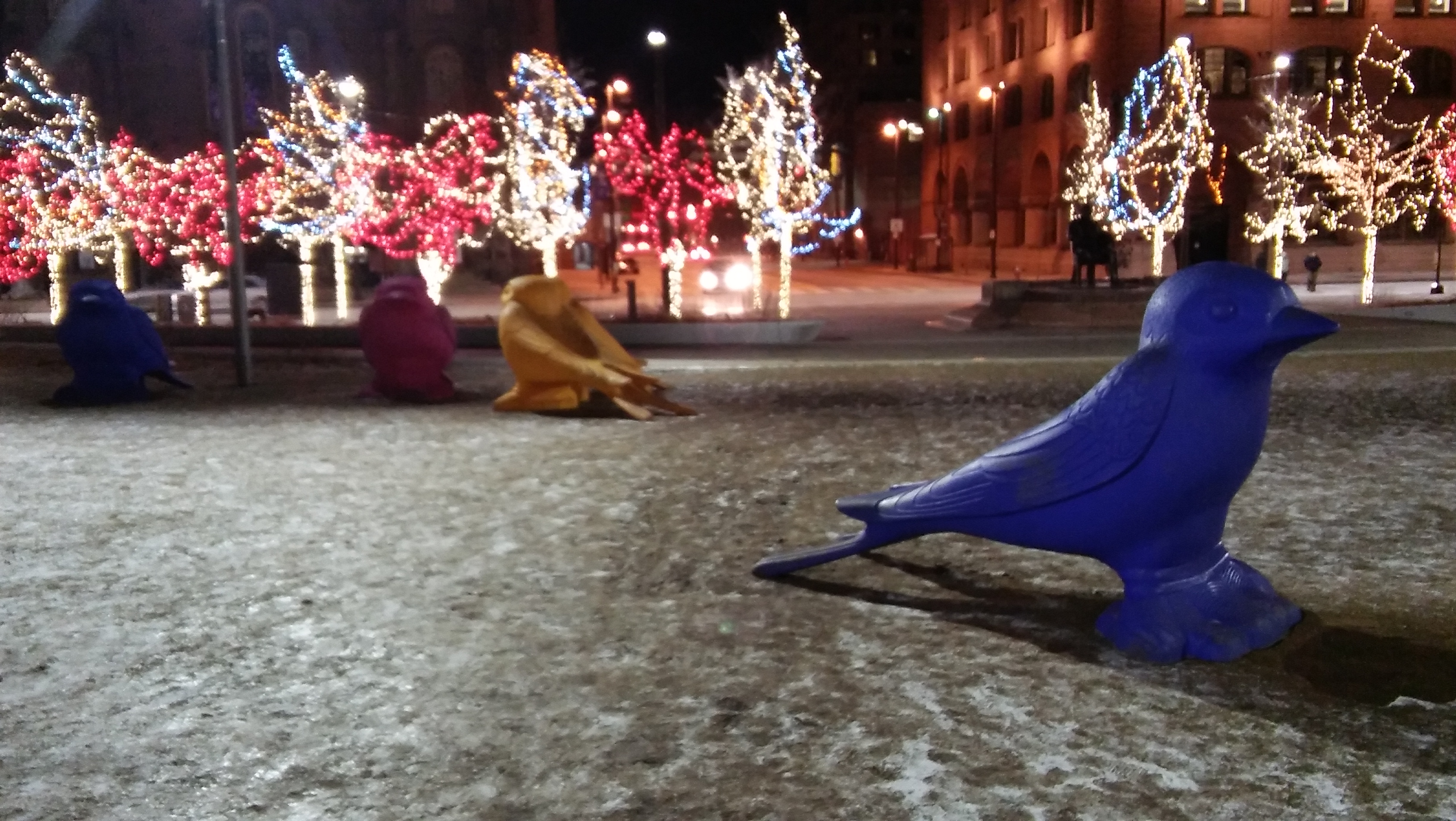
The below group of cyclists meeting in Public Square reminded me of the group rides I did in Portland. I saw about 100 cyclists take control of the right lane near Quicken Loans Arena about an hour later so the group likely expanded. Since I don’t think of Cleveland when I think of bike cities, I was impressed seeing this bike culture.

Warehouse District
My excitement about Cleveland’s bike culture took an emotional hit when I saw this bike parking in the Warehouse District. I didn’t see any bikes parked here so is this supposed to be a bike rack or just a barrier to keep motorists from parking on the sidewalk?
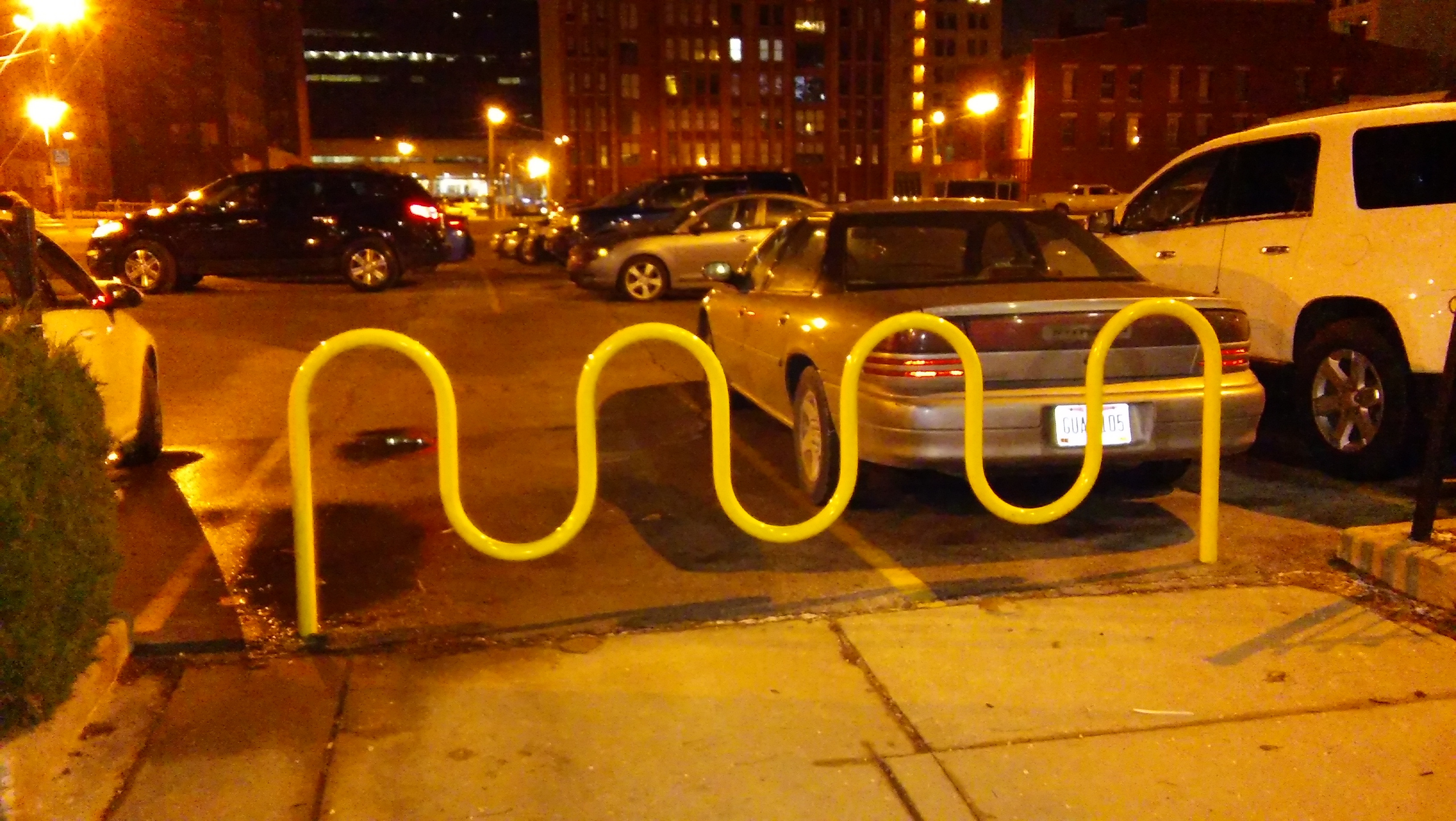
Downtown Cleveland was like an emotional roller coaster for me. After being depressed by the badly designed bike parking, I got excited by Small Box, which is located in the Warehouse District. Small Box has three retail stores created using upcycled shipping containers.
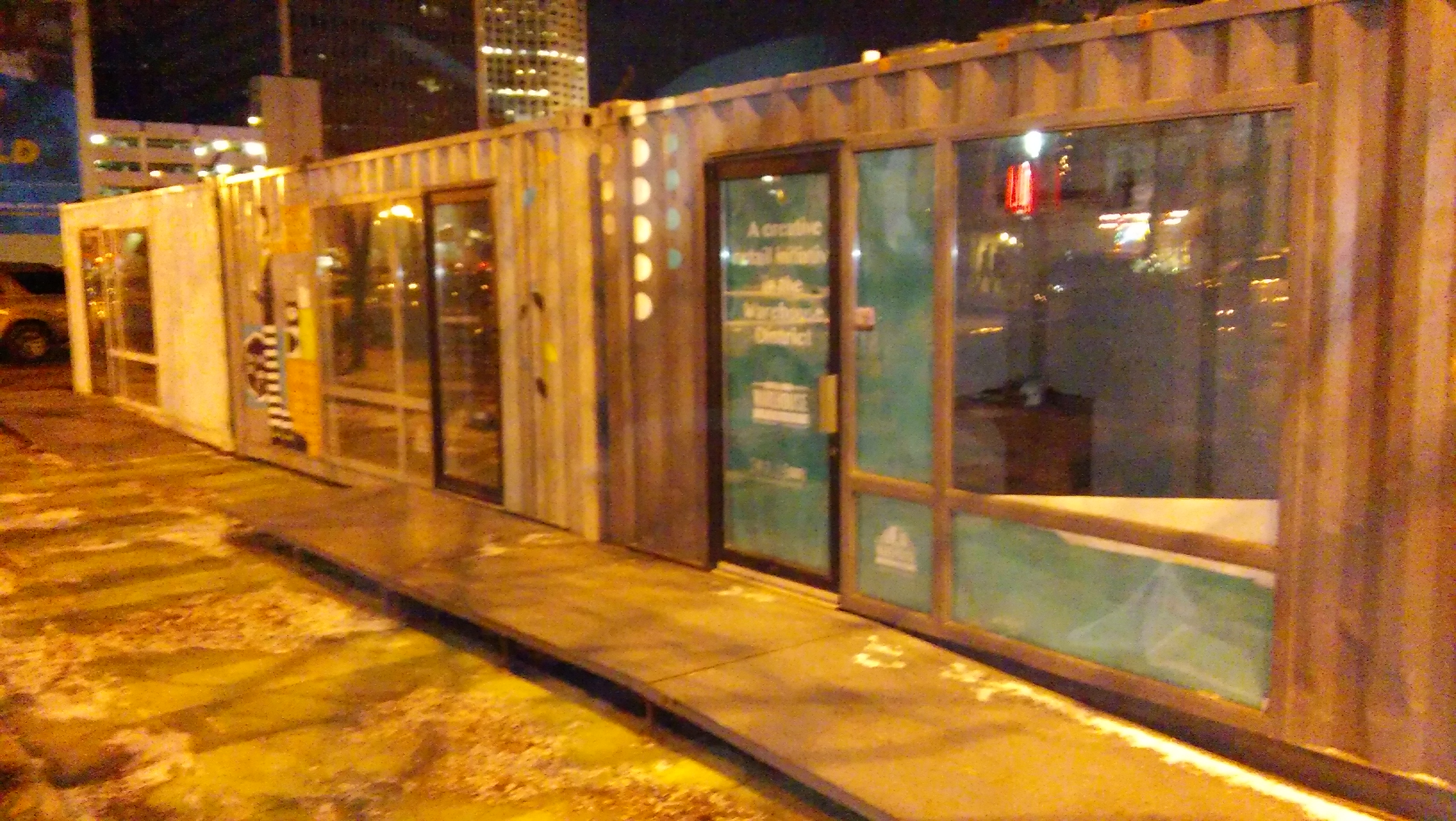
As the below photo, which I took at Public Square, shows, Cleveland has the same problem as Portland with motorists using the “bus only” lane. The rumble strip doesn’t stop motorists from using the “bus only” lane.

To my amazement, the “bus only” lane worked just a block east of Public Square. I still would have preferred seeing a more permanent barrier than just a rumble strip.

Wow! I walked several miles through westside neighborhoods and downtown on Friday afternoon and evening. I haven’t started to share about what I saw walking through eastside neighborhoods on Saturday morning and afternoon. This post is getting long so I wrote a 3rd and final post about Cleveland’s eastside neighborhoods.
Future Trips
My quick Cleveland solo trip helped me better understand what I can feasibly do during my weekends off from work. During grad school, I had to do homework during the weekend so couldn’t take the whole weekend off. I now have the freedom to explore other cities like Baltimore, Philadelphia, New York City, Boston, Montreal, Quebec City, Toronto, Indianapolis, Chicago, New Orleans, Memphis, Minneapolis, and many other cities. Thankfully, I can reach most of these cities using Amtrak. If I have limited time, I can always fly. Since it’s winter, I’m currently focusing on warmer cities where I don’t have to worry about the bike lanes and trails not being plowed.











